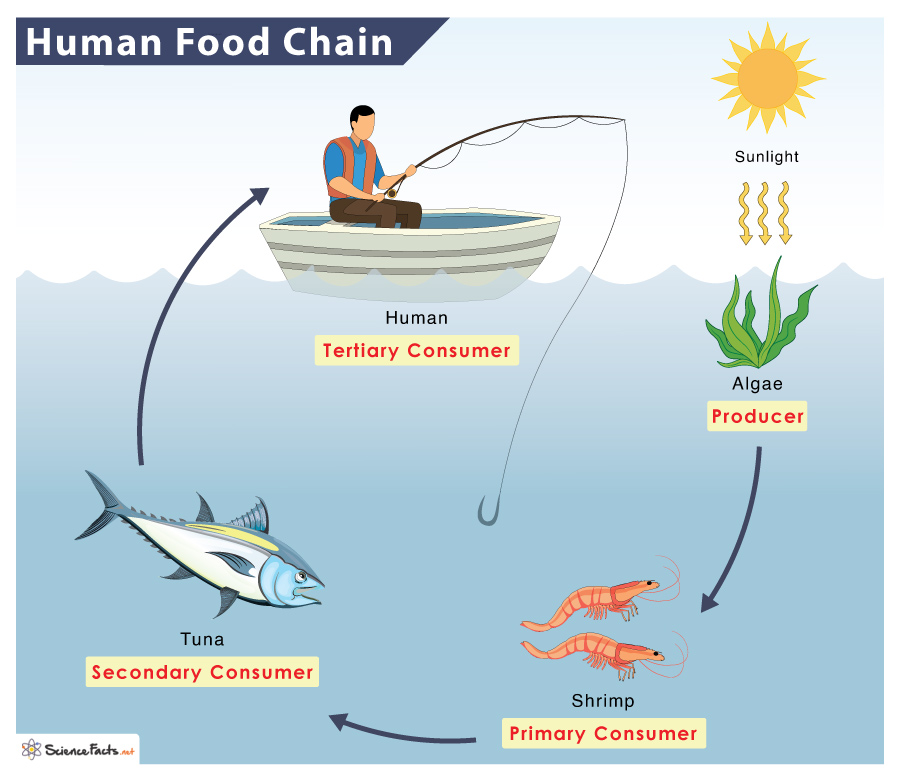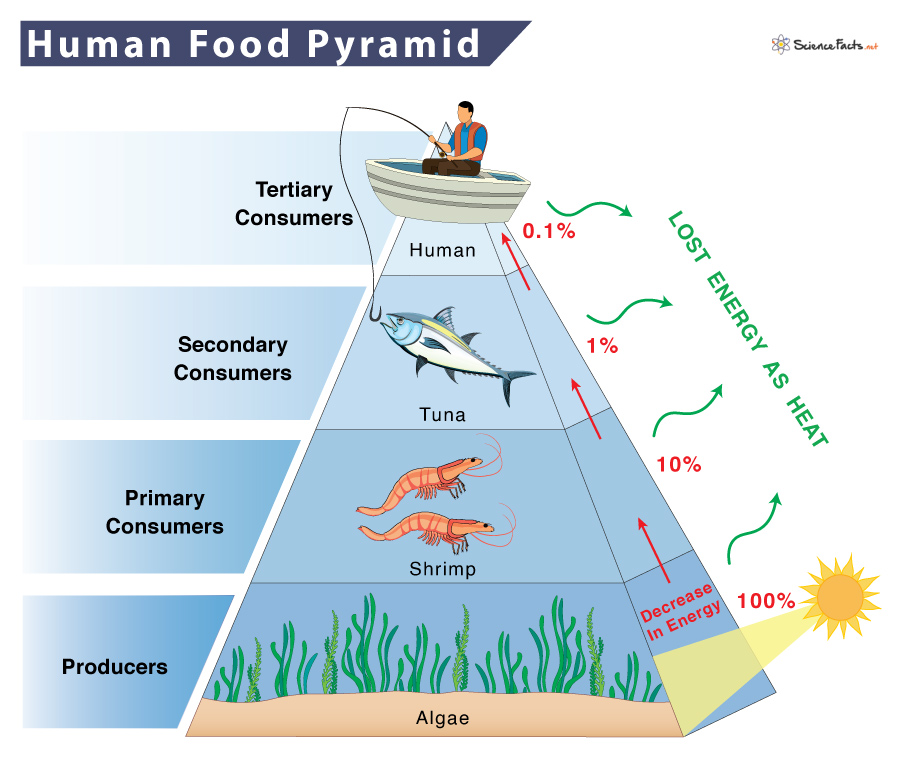Human Food Chain
We all are part of some chain when we consume food, which was once a living thing. Food chains that include and end with humans are human food chains.
Humans are consumers and thus are ranked above the producers in any food chain. They rank at the top of any food chain, above the tertiary consumers, because they consume both plants (vegetables) and meat (other consumers) but are not eaten consistently by any animals.
Humans prey on animals at all the trophic levels of the food chain. However, the food habit of humans is not universal. An individual’s diet varies based on geographic location, socioeconomic status, food availability, or choice. For example, some people are vegetarians and do not consume animal meat. On the other hand, others are omnivorous or carnivorous and eat animal meat.
Those of us who are vegans (who thrive on vegetables and fruits) are ranked as primary consumers. People who consume plants and herbivorous animals like goats and sheep are secondary consumers. Those who eat carnivorous animals like tuna are either tertiary or apex consumers. Thus, whether humans are primary, secondary, tertiary, or apex predators depends purely on the context.
A typical human food chain is three or four organisms long. Plants, or algae being the producer, are at the bottom of the food chain. Herbivores like cows, goats, pigs, and sheep, the primary consumer of the food chain, follow them. When humans feed on the primary consumers, they become secondary or apex consumers in this food chain.
The food chain becomes complicated when the producer is from the sea. It starts with algae as the producer, shrimp as the primary consumer, and humans as the secondary consumer. A longer food chain has algae as the producer, shrimp as the primary consumer, small fishes as the secondary consumer, tuna as the tertiary consumer, and humans as the apex consumer.
When the above food chain is represented as a pyramid, it looks upright.
Like other food chains, decomposers decompose the dead remains of humans and other food chain organisms, which helps recycle the nutrients onto the soil to be taken up by the plants. Decomposers are not placed at any specific hierarchy level in the food chain as they feed on decaying organisms from any of the trophic levels.
-
References
Article was last reviewed on Wednesday, February 22, 2023





